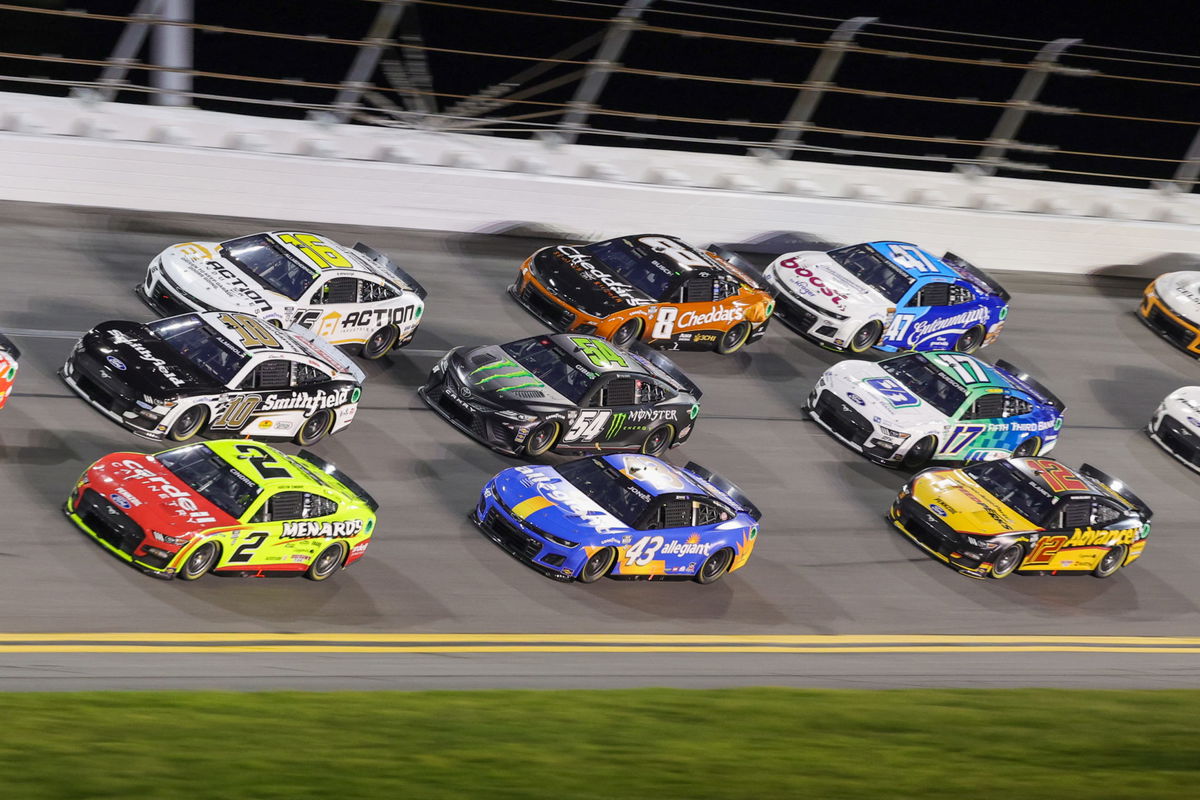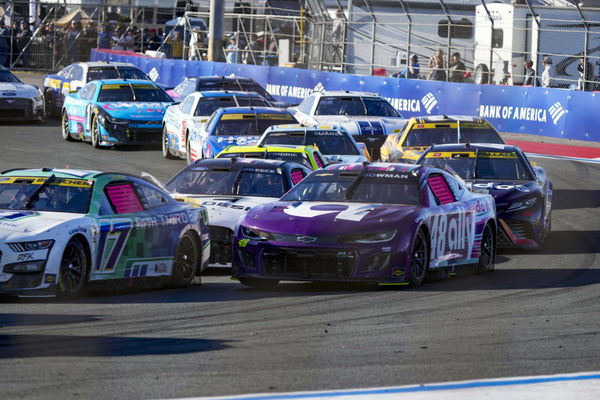
USA Today via Reuters
Aug 26, 2023; Daytona Beach, Florida, USA; NASCAR Cup Series drivers race during the Coke Zero Sugar 400 at Daytona International Speedway. Mandatory Credit: Mike Watters-USA TODAY Sports

USA Today via Reuters
Aug 26, 2023; Daytona Beach, Florida, USA; NASCAR Cup Series drivers race during the Coke Zero Sugar 400 at Daytona International Speedway. Mandatory Credit: Mike Watters-USA TODAY Sports
NASCAR is typically known for having large grids of up to 40 cars. Sure, there are regular teams like Hendrick Motorsports, Joe Gibbs Racing, Team Penske, and more. However, there are plenty of other teams that make up the average NASCAR Cup Series grid. This is where NASCAR’s charter system comes into play, which has been beneficial for many smaller Cup Series teams. In simple terms, having a charter means the team can enter and get a portion of the purse at every NASCAR Cup race. Since motorsport is an expensive business, this arrangement has helped the small teams to survive.
Watch What’s Trending Now!
The cost of acquiring a Cup Series charter is pretty steep. In fact, the asking price, in 2022, was around $20 million, which was a 48 percent increase from early in the year. If we go a year back, 23XI Racing bought over the now-defunct StarCom Racing for #13.5 million. The sudden price hike is due to the TV rights deal that is currently in place. As it stands, teams will gain 25 percent of the current US $820 million deal. However, all of this is about to change.
ADVERTISEMENT
How the game will change in 2025 with the new NASCAR TV deal?
Very recently, NASCAR inked a brand new TV deal starting in 2025, running for 7 years. The new TV deal is worth $7.7 billion and encompasses a number of media houses, as well as streaming platforms for the first time. In other words, NASCAR teams and the charters stand to gain a larger piece of the pie from 2025 onwards. The signees include the usual suspects Fox Sports and NBC Sports. However, there are also a few newcomers: Amazon Prime, TNT Max, and Warner Brothers Discovery, and things will get very interesting from here on out.

USA Today via Reuters
Oct 8, 2023; Concord, North Carolina, USA; Cars crowd into turn four after a restart during the Bank of America Roval 400 at Charlotte Motor Speedway Road Course. Mandatory Credit: Jim Dedmon-USA TODAY Sports
However, it is worth noting that now NASCAR teams may be reluctant to negotiate the charter agreement, which decides how NASCAR’s revenue gets distributed among the teams. The concern is that the asking prices are excessive and may make it difficult to turn a profit. Previously, charters used to pay around $5 million annually per car. Admittedly, the price varied depending on several factors including on-track performance. It has gotten to a stage where the grid has shrunken and is barely reaching the 40-car mark.
ADVERTISEMENT
WATCH THIS STORY: NASCAR’s Charter Conundrum: A Twist in the Tale?
Top Stories
What Settlement Agreement Have Michael Jordan & NASCAR Reached? Everything to Know From Evergreen Charters to Payout

NASCAR Flexes Authority With Drastic ‘Sign or Sell’ Charter Clause Hours After $365M Lawsuit Settlement

Michael Jordan Makes 8-Word Statement After Forcing NASCAR to Lawsuit Settlement

Michael Jordan Brings NASCAR to Its Knees as Jim France’s Courtroom Collapse Triggers Settlement

Jordan Fish Pens Heartfelt Message for Fiancé Denny Hamlin After Dramatic Courtroom Settlement With NASCAR

ADVERTISEMENT
How bad was the situation compared to previous years?
Back in 2004, during the second Cup race at the Atlanta Motor Speedway, NASCAR witnessed a very large grid. 58 teams turned up to try and qualify for 43 grid slots. Additionally, during the 1994 inaugural Brickyard 400, around 86 cars showed up to try and qualify for the race. At the moment, no more than 36 cars are showing up every weekend to try and compete in the NASCAR Cup races.
One would think that a monumental $7.7 billion media deal should be great for charter teams. According to a May 2023 report, the teams skipped an April meeting with series leadership, likely about this matter. Later on during the year, NASCAR’s top executives confirmed that they were meeting individually with the teams. Joe Gibbs driver and 23XI Racing team owner Denny Hamlin said, “I think there was a little bit of (negotiating) traction, but it looks like NASCAR’s not acknowledging the negotiating committee anymore. They’d rather do it the way they did it 20, 30 years ago and meet team-by-team and try to pick them off one-by-one and get a deal done that way.”
The idea is to come out with a new revenue-sharing model for the 36 charters, which collectively are worth tens of millions. According to Hamlin, teams want to make the charters permanent to protect the owner’s investment. But what do you think of this whole kerfuffle?
ADVERTISEMENT
READ MORE: NASCAR Is Taking Broadcasting and Sports Media Production to the Next Level, and Here Is How
ADVERTISEMENT
ADVERTISEMENT
ADVERTISEMENT

